#Apollo Phase A
Explore tagged Tumblr posts
Text

Model of the proposed Saturn C-1 with the Apollo Command and Service Module (Phase A configuration).
source
#Apollo A#Apollo Phase A#Apollo CSM#Saturn I#Saturn I Block II#Rocket#NASA#Apollo Program#Model#1960s#Saturn C-1#my post
26 notes
·
View notes
Text


#ace attorney#gyakuten saiban#i'm having my kira yoshikage phase#i like hands ok?#yes mia is a ghost :p#naruhodou ryuuichi#phoenix wright#ayasato mayoi#ayasato harumi#ayasato chihiro#maya fey#pearl fey#mia fey#miles edgeworth#mitsurugi reiji#dick gumshoe#itonokogiri keisuke#karuma mei#franziska von karma#trucy wright#naruhodou minuki#klavier gavin#kristoph gavin#garyuu kyouya#garyuu kirihito#apollo justice#odoroki housuke#houzuki akane#ema skye#ok those are way too many tags for some hands drawings
1K notes
·
View notes
Text
Klapollo shenanigans..




#aceattorney#aa4#aa4 fanart#klapollo#apollo justice#klavier gavin#apollo x klavier#ace attorney apollo justice#yaoi#NEVER HAVE I LOVED GAY PEOPLE MOREEEEEEEEEEEE ( except my Kagehina phase in 8th grade but shhhh)#i have plans about Klapollo that I cannot share with you right now#i wish gay men were real#gay lawyers
4K notes
·
View notes
Text

His favorite little oracle
#epic the musical#greek mythology#artists on tumblr#apollo#oracle of delphi#i cooked here - i dunno how but its good#my epic/greek mythology art phase feels to be fruitful
188 notes
·
View notes
Text
I think a lot about the depictions of Troilus' death that feature Achilles trying to prise him with a gift of doves instead of the immediate promise of death.
I've alluded to it before, but I tend to look at Achilles and Apollo as comparison cases - maybe not explicitly foils because I'm petty and that would imply that Achilles is narratively equal to Apollo and I don't want to give him that kind of honour even in a bit of casual analysis - but certainly as characters who gain a great deal of complexity when their actions are contextualised in context of each other's. The ambush of Troilus is just one of those funny little things that gets my mind a-whirring.
Because to me, Apollo's 'Troilus' so to speak is Kassandra. Kassandra, who Apollo coveted and wished to court. Kassandra, who was offered a great gift that would have undoubtedly forever marked her as one of Apollo's if she had accepted. Kassandra, who takes the gift but rejects the god and is cursed for her deception. Kassandra, whose curse makes her experience a thousand deaths over and over with no way of communicating such disaster to those around her.
The Achilles who falls in love with Troilus upon seeing his beauty and wishes to make a conquest of him is much the same to me. The biggest difference between Troilus and Kassandra though is that Troilus' rejection is much more physical. Those doves are nothing more than a symbol of the type of sacrifice Troilus would be; if he accepted them, he would die a docile death, sweet and quiet, a necessary casualty to turn the winds like Iphigenia. Except Achilles' love is nothing like Agamemnon's and it is nothing like Apollo's.
In the face of rejection, Achilles' instinct is to maim, it is to destroy. He was always going to kill Troilus - for the sake of the campaign, the boy had to die - but there was no dove's death, no quick and easy knife through the heart, no spit into an open mouth. Troilus' death is a brutal, drawn-out thing, a chase through the sand, a dragging that bruises his skin, a ripping of his hair, a violation of his flesh, a maiming of his corpse. As far as sacrifices go, it's an apalling one. None would dare to treat an animal set to be sacrificed before a god with that kind of brutality, sacrifices were meant to be blemishless and beautiful, something the gods would find appealing. Iphigenia was given away in her wedding finery, Kassandra was dressed as though to seduce a god. Troilus was a dove with his wings broken and his feathers pulled, whose death cries must've been like the terrible hollering of all birds when they try to alert their kind to a predator.
And as fucked as that is, I love it. It sets Achilles' love as this stormy, squallish thing that bleeds into his rage, it establishes that for him, love and wrath are but two sides of the same blade. Troilus was a necessary sacrifice, but he is in no way given even a modicum of the same dignity his contemporaries are and a part of me is just continually intrigued by this.
#greek mythology#ginger chats about greek myths#I didn't intend to bring Iphigenia into this but she's also handshake emoji with Kassandra and Troilus so here she is#It's super interesting - I consider Troilus and Kassandra as heralds of different turning points in the war#Troilus' death marks the end of that nebulous phase where the Achaeans' actions are ultimately meaningless because they cannot defeat#divine providence with their mortal attempts#and Kassandra's assault is when the last of the gods abandon Troy (the place) for its sack#I've also always found it super fun that Apollo was stopped from intervening with the Troilus assault but Athena#willfully turns her gaze away so she doesn't have to watch Kassandra's defilement on her altar#The different features at play connecting Troilus and Kassandra (and Iphigenia) have always fascinated me oh my gosh#Also the different flavours of love on display at each of the sacrifices#Apollo's Achilles' and Agamemnon's desires are all extremely different but the objects of their affection ends up the same#The savage twist that follows the rejection of those desires is also super interesting when compared#anyway that's a ramble for a different day lmao#the iliad#achilles#apollo#troilus#kassandra#iphigenia
76 notes
·
View notes
Text
Something about the way wind and fire interact. How wind can extinguish a small fire but spread a forest fire.
Something about Leo considering himself more expendable than Jason because the wind will flow on regardless of outside circumstances but fire dies without oxygen
Something about Jason walking on a tightrope, trying to keep Leo’s memories alive without letting his entire life go up in flames in the process. Burning his bridges to camp because he can’t bear go back without Leo. Barely talking to Piper anymore after they give up their search because seeing her always comes with a stinging reminder that they’re missing the third member of their trio.
#trying to formulate coherent thoughts but. exam phase#so have this for now#valgrace#jason grace#leo valdez#hoo#heroes of olympus#leo x jason#jason x leo#ToA#trials of apollo
108 notes
·
View notes
Text

What do you guys think they're talking about?
#art#drawing#wrightworth#narumitsu#ace attorney fanart#ace attorney#phoenix wright#miles edgeworth#I love yaoi men#yaoi yaoi yaoi yaoi#AAHHHHH#AAAHHH IDK ANYMORE I DIDNT EXPECT TO BE IN A FANDOM FOR MORE THAN A MONTH#EVERYTIME I SEE ANYTHING ACE ATTORNEY RELAED I GO NUTS#THIS IS LIKE THAT ONE TOMTORD PHASE I HAD#AND I NEVER TALK ABOUT THAT PHASE#I LOVE THESE TWO SO MUCH IT PHYSICALLY HURTS#Also#I haven't played Apollo Justice yet so wish me luck thnxx#I LOVE PHOENIX WRIGHGTTTT RRRAAGHHH!!!!
128 notes
·
View notes
Text
Nico: why is Leo clinging to you like that?
Jason: a few hours ago he heard me singing "Nobody Loves Me" and thought I genuinely felt unloved and had a mental breakdown so I offered him comfort and he's been here ever since.
Nico:
Nico: oh, honey.
#nico is the “honey” gay#leo is the clingy bi#jason is the confused pan#open for suggestions on that though#nico thinking of when he was in his clingy phase with will#also if you think nico is actually cold and scary i have to disagree#he is soft and lovely but just closed off because of his fear of losing people#but the second he gets attached he is SO clingy and sweet#percy jackson#heroes of olympus#nico di angelo#pjo#trials of apollo#hoo text post#pjo text post#toa#jason grace#toa text post#valgrace#leo valdez#percy jackson and the olympians#percy jackson text post#heroes of olympus text post#trials of apollo text post#leo valdez text post#jason grace text post#jason grace x leo valdez#leo valdez x jason grace#nico di angelo text post
419 notes
·
View notes
Text

didn't think about this one too hard
#kromer lcb#apollo justice#ace attorney#.png#debated drawing kromer phase 1 or phase 2#but then i realized i 'm not done making christmas gifts LOL#nail to his throat..... god i wish that were me
159 notes
·
View notes
Text
Moon of the Day

Earth’s moon!!!
I’m always too busy thinking about all of the other moons that I always forget about our own moon and how much it does for us, but it definitely deserves to be the first ever moon I talk about on the blog:)
Earth’s moon, sometimes nicknamed Luna is the fifth largest moon in the whole solar system. The main theory of how it was created is- When the Earth was young and there were still a lot more rocky planets that weren’t fully formed yet in our region of the solar system, one theoretical planet named Theia orbited very close to us. Eventually the Earth and Theia crashed into each other, but Theia was the smaller planet and didn’t make it. What it did do was launch a large piece of the Earth into space which then molded into a ball because of gravity and stayed in orbit around us becoming moon.
This theory is believed because, when humans landed of the moon in 1969, they brought back samples of Lunar rock. In the sample, they found that the composition was incredibly similar to the composition of earth rock. This led scientists to think that the moon must have originally been part of the Earth.


(Samples of Lunar rock)
Not only does the moon have a cool history, but it also helps us a lot!!! It stabilizes the tides and provides light during the night time, and a lot of animals rely on the moon for their internal clocks.
Something that just occurred to me is that some people might not know why the moon is bright when it’s dark outside for us, or how the moon phases work.

(Picture from space.com)
Basically, as the moon spins around the Earth, different amounts of surface area will be illuminated by the sun causing the moon phases.
Fun fact: The moon is tidally locked to the Earth, which means that we can only ever see one side of it.
Also, a (not so) fun fact: The moon is moving about 3.78cm away from us every year, so feel lucky that you get to see the moon as it is now, because in the future, people on Earth won’t have that privilege.
Overall, our moon is just really really cool, and I hope that you maybe learned something about the giant piece of rock in the sky:)
37 notes
·
View notes
Text
Apollo Program: Phase A or Apollo A
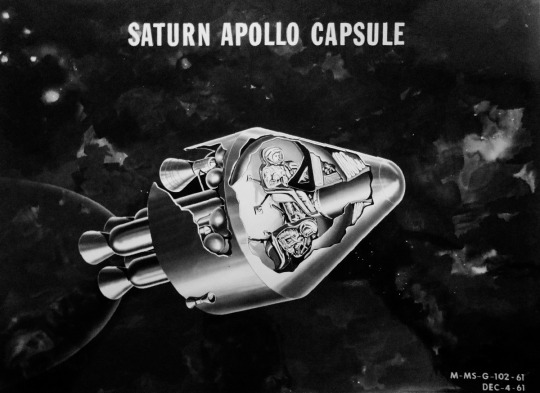
NASA ID: M-MS-G-102-61 Date: December 4, 1961
"Apollo A was a lighter-weight July 1961 version of the Apollo spacecraft.
Status: Study 1961.
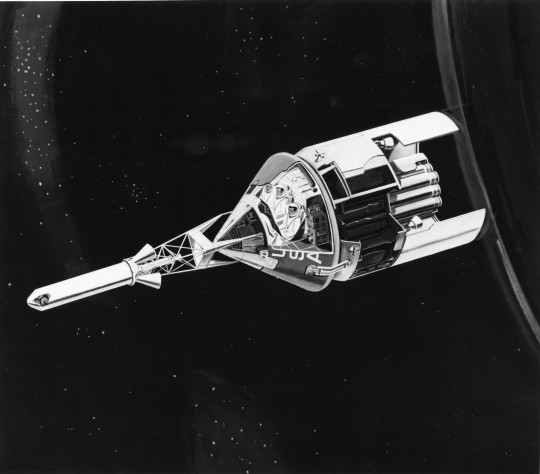
NASA ID: 63-APOLLO-15
It was specifically designed for long-duration operations in space; to conduct re-entry tests at near-parabolic speeds; and then for manned circumlunar missions.

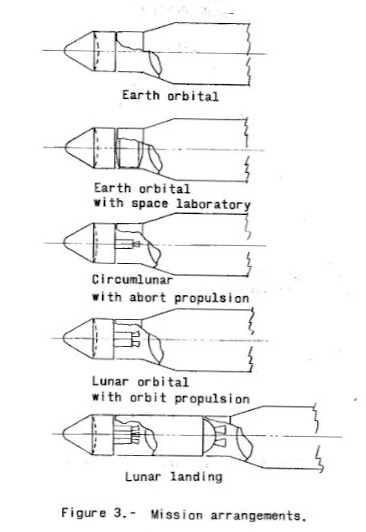
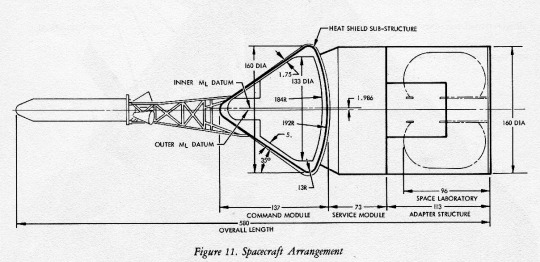

SDASM Archives: Apollo Doc003, Apollo Doc036
At the time of the Apollo bidder's conference in August 1961 an evolutionary approach to the Apollo program was expected. After completion of the Mercury project both the Apollo spacecraft and Saturn launch would gradually fly multi-man crews on a series of ever-more ambitious scientific and technological missions in earth-moon space. This program would begin with manned earth satellite flights of extended lifetime, proceed to lunar circumnavigation, to lunar satellite flights, and ultimately to the lunar landing. Although the Apollo A designation was applied only to the first unmanned Apollo tests at this time, we would use the term here to designate the Apollo design and program plan as envisioned by NASA prior to the Apollo bidder's conference in the summer of 1961.

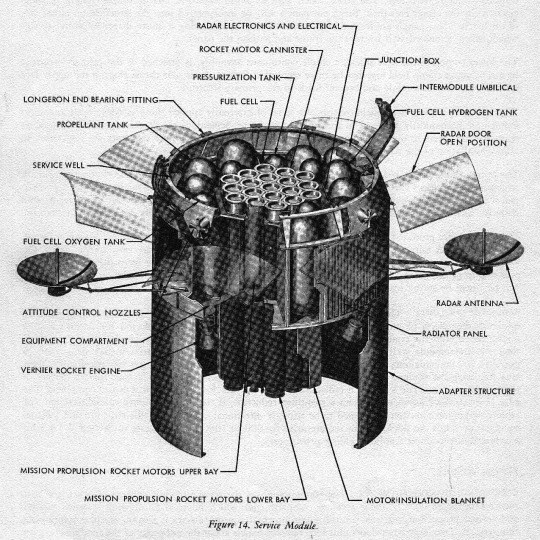
SDASM Archives: Apollo Doc013, Apollo Doc006
The return to earth and the recovery of the manned spacecraft were important parts of these missions. The development of the Apollo spacecraft was to proceed in several phases. Each phase, to the extent possible, would serve as qualification for the subsequent phase. The objectives of Apollo Phase A was:
Qualification of systems and features for the lunar missions within the constraints or the environment of earth satellite orbits of up to 500 km altitude by manned flights.
Qualification of the re-entry heat protection for the lunar missions in unmanned re-entry tests from super-circular and near-parabolic velocities.
Study of physiological and psychological reactions and capabilities of a multiman crew in the space environment during extended periods of time (at least two weeks). In the adapter between the Saturn second stage and the Apollo spacecraft, as an integral part, was a section to be used as an orbiting laboratory. Preliminary designs indicated this laboratory would be a cylindrical section about 3.9 m in diameter and 2.4 m in height. The laboratory would provide the environment and facilities to conduct scientific experiments related to manned operation of spacecraft. Experiments that might be conducted from an Earth-orbiting laboratory included: astronomical observations; monitoring the Sun's activity; testing man's ability to work outside the vehicle; zero-g testing; and micrometeoroid impact study.
Development of flight and ground operational techniques and equipment for the support of space flights of extended periods
Conduct of experimental investigations as needed to acquire information for the subsequent lunar missions.
The two-stage Saturn C-I launch vehicle system would be utilized to carry the Apollo A spacecraft into the low earth-satellite orbits and to accelerate the capsule only to re-entry trajectories during the Apollo A phase.
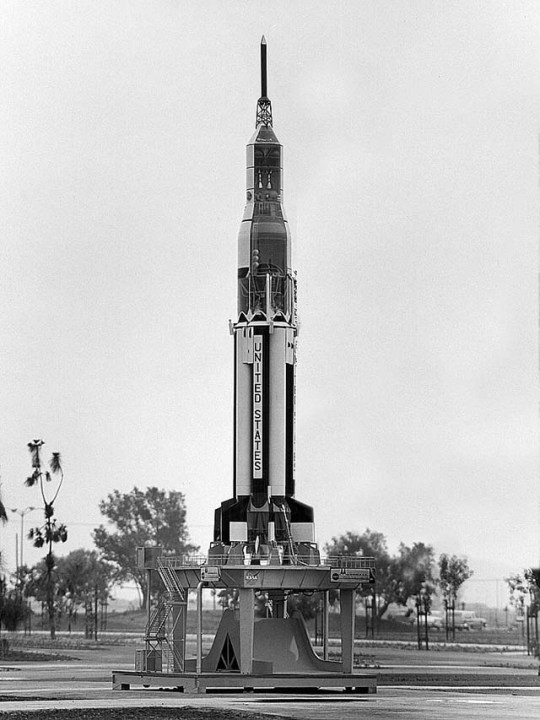
The mass breakdown of the Apollo A earth-orbit version was nearly 1/3 less than that of the later Apollo capsule final design:
Command Module: 3600 Kg
Equipment-Propulsion Module (less Main Motors): 1600 kg
Main Motors: 1300 kg
Space Laboratory: 1400 kg
Launch Escape Propulsion: 1700 kg (separated after first stage burn-out)
Total Launch Weight: 9500 kg
Total Weight in Low Earth Orbit: 7800 kg
As of the summer of 1961 it was planned that Apollo A boilerplate flights in the earth-orbit configuration would take place in October/December 1963 using Saturn C-1's SA-7 and SA-8. SA-9 and SA-10 would launch 3400 kg capsule-only payloads in February-April 1964 to near parabolic velocities in tests of the capsule's hypersonic aerodynamics and heat shield. These prototype capsules would be equipped with parachutes and be recovered.
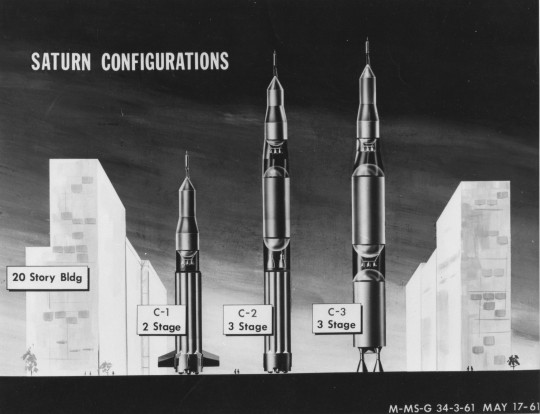
NASA ID: M-MS-G 34-3-61 Date: May 17, 1961
These proving tests would be followed by Apollo A manned earth orbit space laboratory missions in the 1965-1967 period. Manned circumlunar flights would occur at the same time. The booster for such missions was originally intended to be the Saturn C-2. This was changed to the Saturn C-3 in June 1961 when it became clear the Apollo spacecraft would weigh too much for such missions. The C-3 in turn was cancelled in favor of the C-5, and discussion of circumlunar Apollo disappeared by the end of 1962."
-Information from Astronautix.com: link
NASA ID: link
source
#Apollo A#Apollo Phase A#Saturn I#Saturn I Block II#Rocket#NASA#Apollo Program#stay#study#Phase A#1961#Apollo-A#my post
27 notes
·
View notes
Text
Trials of Apollo AU where everything is the same except Lester has an Irish accent
#he thinks it's zeus punishing him for his limerick phase#“It wasn't THAT bad was it?”#lester papadopoulos#trials of apollo#toa#toa fandom#riordanverse#misc skeptic thoughts
95 notes
·
View notes
Text
"Don't panic Justice, that's just prosecuter Gavin"

#I think I'm back to my aa phase...#Aa4#ace attorney#Ace Attorney 4#klavier gavin#apollo justice#klapollo
119 notes
·
View notes
Text

#ace attorney#wright anything agency#waa#phoenix wright#trucy wright#apollo justice#athena cykes#ema skye#klavier gavin#mia fey#Charley the plant#yes I believe trucy had a creepypasta/ overanalyzing media phase#Apollo knows way too much about video games he's never played because of her#my art
327 notes
·
View notes
Note
I’m still rather new to Greek mythology and so I need confirmation 😞
What is the difference between Apollo and Helios?
Is Apollo like light or what?
IM SORRY 😭😭😭😭😭
Hi ! No problem. We all start somewhere. So let's see each god separately, because they are indeed not the same. The line gets a bit blurry in later times (roman) but they are distinct in Greek mythology.
Helios
Is the god of the sun. That's his main attribute. He's the brother of Selene, the moon, and Eos, the dawn.
They're all children of the Titans Hyperion, the light and Theia, the goddess of sight.
Helios is the father of figures like Circe, Pasiphae, Phaeton and Aetes (Medea's dad). He has a few lovers, all of them being women.
He's shown riding a charriot of four horses, that even have their own names.
Helios appears in the Odyssey for example, as Odysseus' men steal and eat his cattle, then anger him
Little off topic but idk if you're a fan of Epic the musical but the fandom often confused Apollo and Helios. The "god of the sun" in the end of Mutiny is Helios. Because he's the one offended in the original Odyssey.
Just saying that so you know you're not alone in this.
Anysays, back to the myths.
He's also the one to snitch on Ares and Aphrodite when they sleep together without Hephaestus knowing. Then he snitches on Hades for kidnapping Persephone.
Helios sees everything and he's not afraid of telling everyone if asked. Because he's the sun. Iirc Selene also has this capacity in the nighttime.
Apollo
Apollo is the son of Zeus and Leto, as well as Artemis' twin brother.
He isn't really the god of the sun, at least that's not prevalent until roman mythology. His thing is more music, poetry, healing/diseases, truth, mathematics.
Edit : and he's a god of prophecy. Very important detail that I forgot in the original post.
As an Olympian, he's more prevalent than Helios and appears more often in the myths.
He's in the Iliad for example, as a protector of the Trojans. He also appears in plays like Alcestis from Euripides or the Oresteia from Aeschylus.
He also plays a role in many isolated stories talking about his love life, his exploits, him punishing mortals or just people that annoy Leto. Because he cares about his momma.
You're absolutely right in the fact that he's related to light, most notably with his epithet Phoebus/Phoibos, which means shining or brilliant.
Funnily enough, he also has a cattle story, but it's related to his younger half-brother Hermes being an absolute scallywag of a baby and stealing them (this myth always makes me laugh 😂).
Apollo also has a bunch of lovers, with a lot of high and lows. Most of them being women but there are also some men : Hyacinthus being the most well-known. There's also Cyparissus, Admetus and Adonis for example.
For the women, there's Cyrene, Urania (the muse), but also stories that ended badly like with Cassandra or Coronis. The former rejected him despite a promise and the latter cheated on him.
And then there's Daphne, but that story is pretty well-known.
Among Apollo's kids, there's figures like Asclepius, Aristaeus, Idmon, sometimes Orpheus and even Chiron as an adoptive son (his biological father is Kronos).
Btw Apollo is involved in the life of every single one of these kids. Yes, praising Apollo as a father is important to me personally.
Fun fact: his daughter Chariclo even married Chiron. That's sweet :3
Fun fact n°2 : Apollo let Chiron raise his sons Asclepius and Aristaeus.
Because I won't stop rambling about Apollo being a dad, here is this post so I shut up :
Apollo tends to react pretty strongly when offended, a trait he shares with many Olympians. Just don't mess with Leto, Artemis or any of his kids and normally you should be fine.
#yes this post turned into fun facts about Apollo and his kids by the end 😂#sorry but this is super important to me right now. I'm in a Dadpollo phase#helios#apollo#phoebus apollon#ask#greek mythology#greek myth discussion#not a reblog
13 notes
·
View notes
Text
Day 3: Asclepius

Interpretation notes and trivia under the cut!!
Woo boy, this guy was another difficult character to settle on both a design and an interpretation for! Asclepius tends to have two big schools of thought for his tale, either he's the tragic doctor who resorted to illicit methods in order to save his patients or he's a strict scientist who was so skilled at his art that his resuscitations were called magic but were just science. I don't actually mind either interpretation, but due to the way I personally see Coronis and the way I chose to interpret Asclepius' birth story, I chose to focus on a different facet of Asclepius; Asclepius the family man. The theme of geneology and the inheritance of 'curses' through blood and birth is one that permeates this work and Asclepius, in a lot of ways, has not only inherited both his mother and father's banes but his actions and talents create new ones for his children. Throughout this, and all the many messy crimes Asclepius will commit in the name of what he thinks is necessary and right, he will willfully ignore the warning signs staring him dead in his face screaming that he will leave the burden of his work to his children and it will be easy. After all, Asclepius has made a career out of ignoring his own father's warnings and cautions, what are a few more red flags to ignore?
Less of a character note and more of a personal thing, but for a very long time I used his teenaged design when sketching out scenes and ideas but after tidying up my timeline, I realised that he would be an older man throughout the events of the story!! Since he's properly mortal, he would have to look his age and while that was slightly intimidating since I've not drawn many older characters, it also made me very excited since characters in the 40+ age range are rarely protagonists of these sorts of adventure/fantasy stories and working in the physical differences between him and his brothers was extremely fun!
Some fun trivia:
Youngest of Apollo's children currently alive and kicking. Maybe it was because Apollo so intensely regretted the way he dealt with Coronis but he doted endlessly on Asclepius and essentially personally oversaw his education and training. Because of this, Asclepius, without a doubt, is the child with the best relationship with Apollo between the brothers and believes unfalteringly in his father even if they have many practical and philosophical differences.
Has a bit of a sixth sense when it comes to necromancy and communing with the dead and spirits beneath the earth. Because he was rescued from the torch of death when he was babe, he has retained a connection with the chthonic. While he cannot exactly see figures like Thanatos or Hermes, he can certainly sense when they are afoot. Is very aware that Thanatos cannot stand him and expects to be taken by Ker when he does finally die.
Always keeps gold coins on him on the off chance he is spontaneously struck down while doing research or healing some previously unhealable disease. His father, upon realising that his warnings would be thoroughly ignored, pleaded for him to do at least that since after Asclepius is dead, Apollo would be unable to intercede for him.
Happily married and has four children! His eldest Machaon chose to follow his footsteps and became a gifted surgeon in his own right while his second eldest Iaso chose to follow her mother's footsteps and become more of a nurse than a doctor. He's endlessly proud of all of his children and hopes his research makes the world a better place for them.
Was recognised by Apollo at 15 and became Doctor Laureate at 17. Lost said laurels at 22 after he revived his second corpse from the dead and since then has been on a strict probation when practicing his medicine. Has a mark on his left wrist that will fill itself out if he commits such an atrocity again and then he will be marked for death and supposedly tormented until he forfeits his soul.
On very good terms with Orpheus and the two often work together and catch up when they happen to meet up while travelling. Never knew Eurydice but he gets the feeling that he would've really liked her.
Despite being a son of Apollo, has absolutely zero musical talent and cannot dance. He can't maintain his hair either and would've cut it multiple times over if Apollo himself didn't stop him and chastise him for even thinking about such a thing. Epione does his hair. The little braids in his beard are courtesy of the twins Hygiea and Panacea who enjoy putting little braids in anything they can get their hands on.
Doesn't resemble his father or his mother actually! The relative he resembles most is his paternal grandfather Zeus, a fact that gives his wife endless grief because his hair is thick but not curly, a trait she covets. Asclepius having thick body and facial hair was also very awkward considering Apollo is incapable of growing body hair and, for a while, his lack of curls and cascade of body hair when Asclepius started puberty made Apollo doubt whether Asclepius was truly his or if he had saved Ischys' child instead.
Has zero self preservation and will hunt monsters and creatures for their blood, teeth, claws and hides for his medicines. Like his father, he has a personal 'wall of horrors' where he stores everything from gorgon blood to pegasus feathers to hydra venom. Sometimes gods in the guise of men will simply give him precious materials because they know Asclepius is the one who will take their unsolveable cases in the face of disaster. It is a very risky exchange and has only barely skirted by Zeus' notice because actual money hasn't been exchanged (yet).
Preferred weapon is the scalpel and doesn't like fighting humans. Has a fire-retardant mantle made from chimera skin Apollo gave him when he was a child that doubles as a very good shield in a pinch.
Favourite colour is withy purple and his favourite food is goat butter spread on bread and topped with celery, tomatoes and olive oil. Has a lot of snake themed jewellry that he's passed on to his son because he thinks they're too gaudy for his old self to be wearing.
#ginger draws#pursuing daybreak posting#the way I want to talk about Asclepius and Artemis but CAN'T because that'll inevitably lead to talking about Hippolytus??#and that is BEEG spoiler nonsense because Hippolytus' whole affair plays out so much differently here than in myth#anyway Asclepius is fun - a fun guy#if I had to describe his personality in a word it would be dangerous#Dangerous in the kind of way you can only be if you're tempting fate and have a family tbqh#Asclepius is well meaning but because he's gotten away with flouting rules for so long he has the confidence#of a man who thinks he'll always get away with it even after Apollo's warned him so many times#He also has what I affectionately call “Dad-blindness”#All of his brothers have gone through it - that phase where they're super disillusioned with Apollo as a father because they haven't seen#how ruthless and cold he can be as a god#most of Apollo's mortal children don't live long enough to actually get disillusioned? but Aristaeus and Orpheus very much#have a much more complicated view of their father than Asclepius' “Apollo will always protect me because he's my father” view#no one tell him#asclepius#greek mythology#october art challenge
52 notes
·
View notes